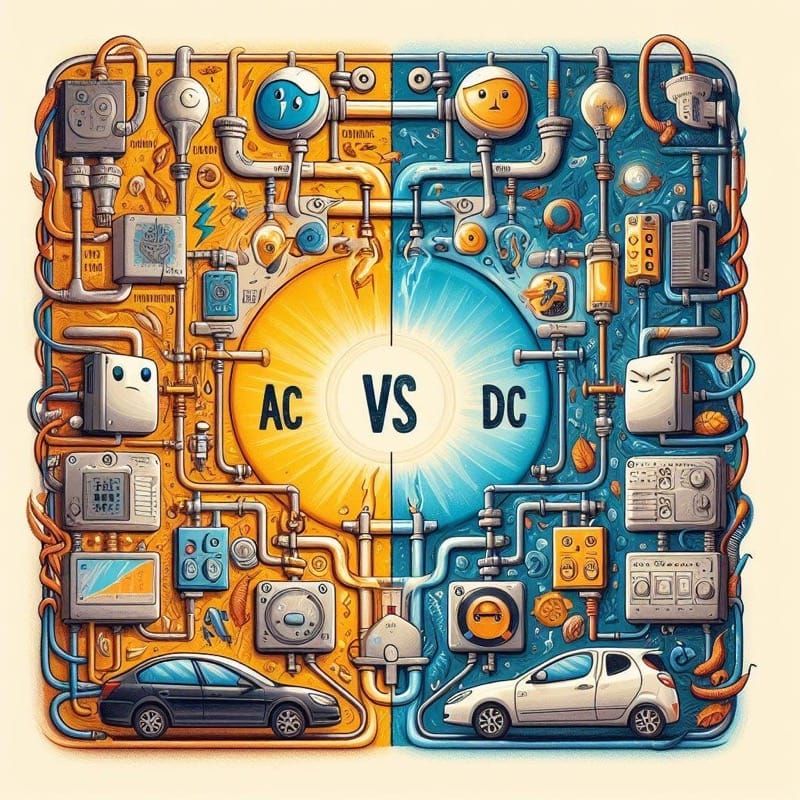The world of electricity runs on two main currents: AC (Alternating Current) and DC (Direct Current). While both provide power, they differ significantly in how they flow and function.
| Feature | AC (Alternating Current) | DC (Direct Current) |
|---|---|---|
| Flow of Electrons | Periodically reverses direction (positive to negative and back) | Flows constantly in one direction |
| Analogy | Like a wave constantly oscillating | Like a straight line with a consistent flow |
| Common Applications | Homes, businesses, power grids (due to easy voltage transformation and long-distance transmission) | Batteries, solar panels, electronics (requires stable and consistent current) |
| Voltage | Can be easily transformed to different voltage levels | Fixed voltage level |
| Examples | Power outlets, wall chargers, appliances | Batteries, solar panels, LED lights, electronics (laptops, phones) |
AC vs. DC: The Key Difference
The key difference lies in the direction of electron flow:
- AC: In AC, the flow of electrons periodically reverses direction, changing polarity from positive to negative and back again. Think of it like a wave constantly oscillating.
- DC: In DC, electrons flow in a constant, unidirectional manner, moving steadily in one direction only. Imagine a straight line with a consistent flow.
Applications of AC and DC
These flow differences lead to distinct applications:
- AC: Due to its ability to be easily transformed to different voltage levels, AC is the dominant source of electrical power in homes and businesses. It also allows for efficient long-distance transmission.
- DC: Commonly found in batteries, solar panels, and electronics, DC is ideal for powering low-voltage devices and applications requiring a stable and consistent current.
Understanding both AC and DC is crucial when dealing with electricity, allowing you to make informed choices about power sources and equipment compatibility.







